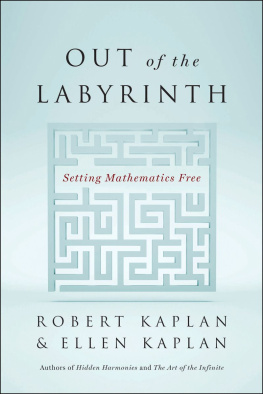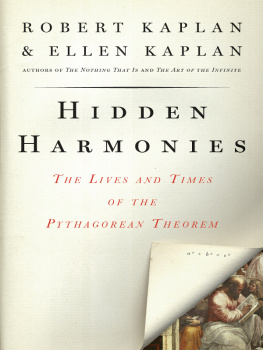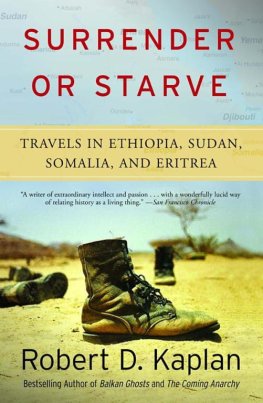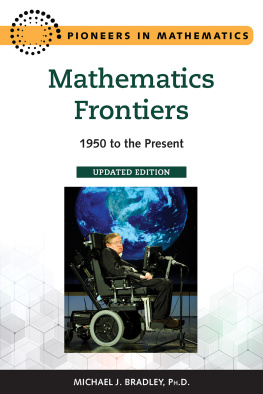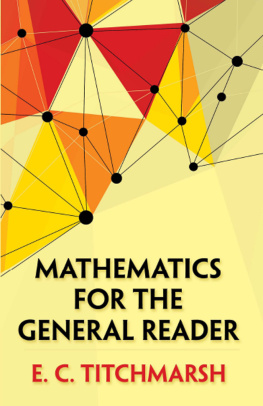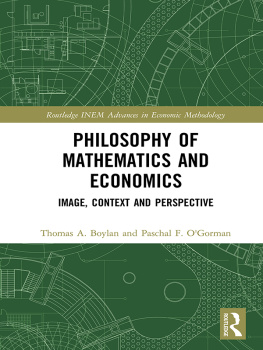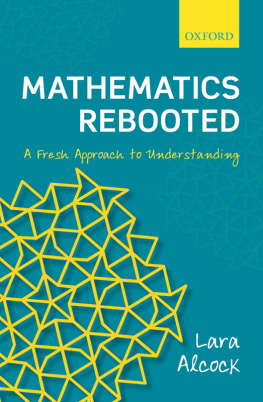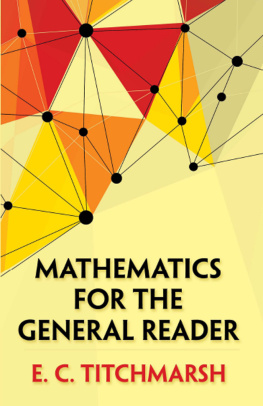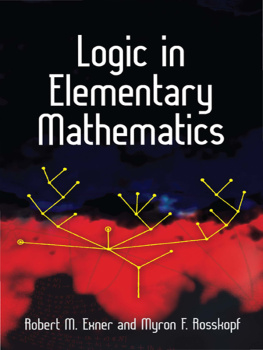Acknowledgements
We have been unusually fortunate in our readers, who from four different perspectives brought our book into focus. Jean Jones, Barry Mazur, John Stillwell, and Jim Tanton put a quantity of time and quality of thought into their comments, which made the obscure transparent and the crooked straight. We are very grateful.
The community of mathematicians is more generous than most. Our thanks to all who have helped, with special thanks to Andrew Ranicki and Paddy Patterson.
No one could ask for better people to work with than Eric Simonoff and Cullen Stanley of Janklow & Nesbit, who make the gears that turn writing into reading mesh with ease; nor a better, more thoughtful editor than Peter Ginna, in whom all the best senses of wit unite.

An Invitation
Less than All cannot satisfy Man.
William Blake
We commonly think of ourselves as little and lost in the infinite stretches of time and space, so that it comes as a shock when the French poet Baudelaire speaks of cradling our infinite on the finite seas. Really? Is it ourself, our mind or spirit, that is infinitys proper home? Or might the infinite be neither out there nor in here but only in language, a pretty conceit of poetry?
We are the language makers, and what we express always refers to somethingthough not, perhaps, to what we first thought it did. Talk of the infinite naturally belongs to that old, young, ageless conversation about number and shape which is mathematics: a conversation most of us overhear rather than partake in, put off by its haughty abstraction. Mathematics promises certaintybut at the cost, it seems, of passion. Its initiates speak of playfulness and freedom, but all we come up against in school are boredom and fear, wedged between iron rules memorized without reason.
Why hasnt mathematics the gentle touches a novelist uses to lure the reader into his imagination? Why do we no longer find problems like this, concocted by Mahvr in ninth-century India:
One night, in a month of the spring season, a certain young lady was lovingly happy with her husband in a big mansion, white as the moon, set in a pleasure garden with trees bent down with flowers and fruits, and resonant with the sweet sounds of parrots, cuckoos and bees which were all intoxicated with the honey of the flowers. Then, on a love-quarrel arising between husband and wife, her pearl necklace was broken. One third of the pearls were collected by the maid-servant, one sixth fell on the bedthen half of what remained and half of what remained thereafter and again one half of what remained thereafter and so on, six times in all, fell scattered everywhere. 1,161 pearls were still left on the string; how many pearls had there been in the necklace?
Talking mostly to each other or themselves, mathematicians have developed a code that is hard to crack. Its symbols store worlds of meaning for them, its sleek equations leap continents and centuries. But these sparks can jump to everyone, because each of us has a mind built to grasp the structure of things. Anyone who can read and speak (which are awesomely abstract undertakings) can come to delight in the works of mathematical art, which are among our kinds greatest glories.
The way in is to begin at the beginning and move conversationally along. Eccentric, lovable, laughable, base, and noble mathematicians will keep us company. Each equation in a book, Stephen Hawking once remarked, loses half the potential readership. Our aim here, however, is to let equationsthose balances struck between two ways of lookinggrow organically from what they look at.
Many small things estrange math from its proper audience. One is the remoteness of its machine-made diagrams. These reinforce the mistaken belief that it is all very far away, on a planet visited only by graduates of the School for Space Cadets. Diagrams printed out from computers communicate a second and subtler falsehood: they lead the reader to think he is seeing the things themselves rather than pixellated approximations to them.
We have tried to solve this problem of the too far and the too near by putting our drawings in the human middle distance, where diagrams are drawn by hand. These reach out to the ideal world we cant see from the real world we do, as our imagination reaches in turn from the shaky circle perceived to the conception of circle itself.
Fuller explanations too will live in the middle distance: some in the appendix, othersthe more distant excursions(along with notes to the text) in an on-line Annex, at www.oup-usa.org/artoftheinfinite.
Gradually, then, the music of mathematics will grow more distinct. We will hear in it the endless tug between freedom and necessity as playful inventions turn into the only way things can be, and timeless laws are draftedin a place, at a time, by a fallible fellow human. Just as in listening to music, our sense of self will widen out toward a more than personal vista, vivid and profound.


